ANTT® is used in all healthcare sectors & settings
ANTT’s logical, and easy to understand principles, are demonstrated by the wide range of healthcare settings it is now utilised in everyday around the world. From the controlled settings of acute hospitals to humanitarian, ambulance and military settings, ANTT shows its adaptability and flexibility. When healthcare workers are educated effectively in ANTT, they are better prepared to deliver safe aseptic practice in even the most difficult of situations, to the benefit of patients. Click on the boxes below to learn more about ANTT and our work in different care settings..
Click on the pictures
to learn more about ANTT in different
care settings….

ANTT Hospital Care
ANTT Community/Home Care
ANTT Paramedic/Ambulance Care
ANTT Military Care
ANTT Humanitarian Care
ANTT® is designed & used for all invasive procedures
It’s important to note that ANTT is designed and used for all invasive procedures - from major surgery to simple maintenance of indwelling medical devices. To be efficient as well as safe, the ANTT Practice Framework incorporates two approaches to maintaining asepsis and includes a simple risk assessment for determining the most appropriate approach for any given procedure.
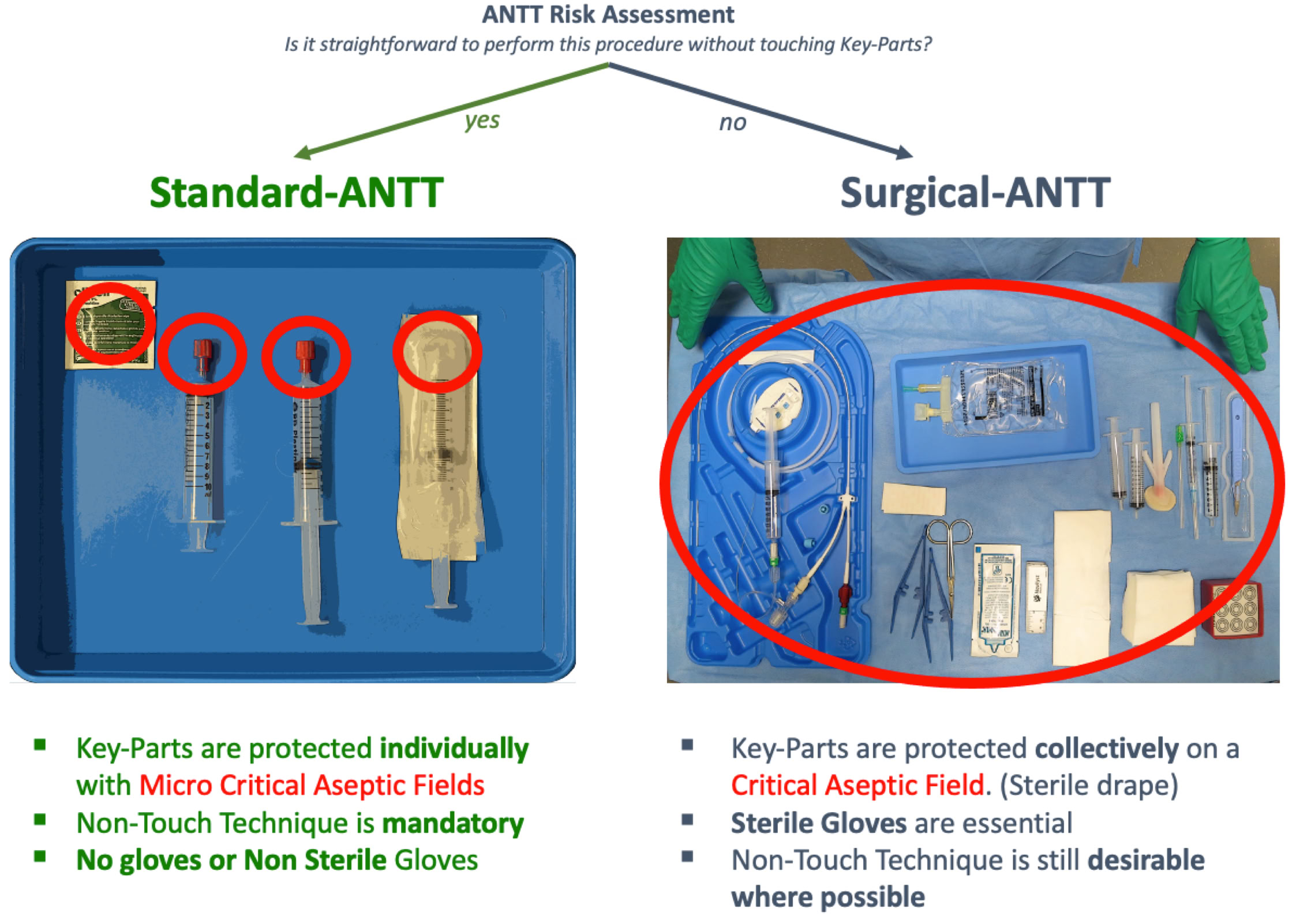
Typical Standard-ANTT clinical procedures:
Typical Surgical-ANTT clinical procedures:
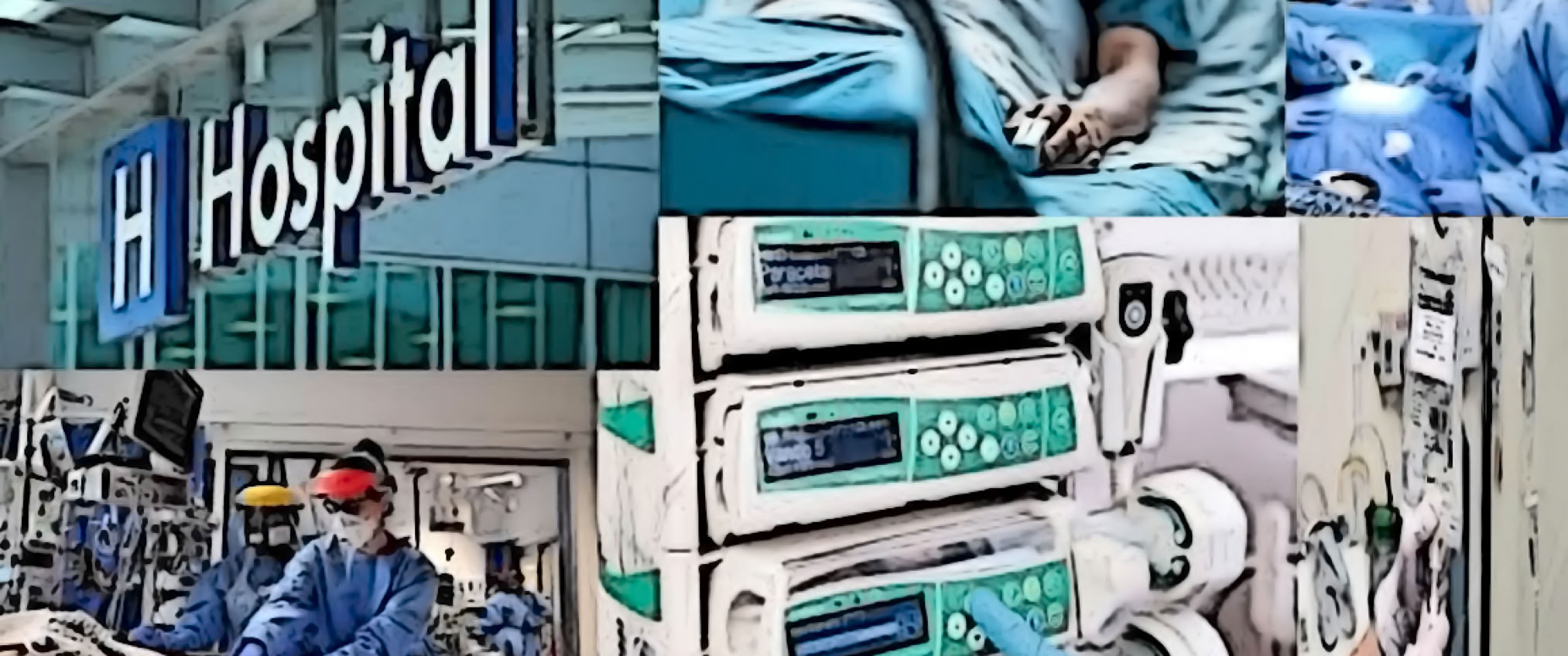
ANTT - Hospital Care
In hospitals around the world, aseptic technique is performed thousands of times every day with every procedure presenting a risk of infection to the patient; Despite frequent and specialised cleaning, hospitals harbour unusually levels of atypical harmful micro- organisms. Whether it be major surgery being performed using Surgical-ANTT, or the emptying of a urinary catheter bag using Standard-ANTT, the ANTT Clinical Practice Framework supports health care workers to keep patients as safe as possible.
In the UK, where ANTT was originated by Stephen Rowley, ANTT is now the standard aseptic technique across the National Health Service - NHS (See publication). Today, ANTT is not only used across departments, floors and wards in individual hospitals, but across different hospitals in different countries, all using the same common practice framework in ANTT. We can freely support hospitals to implement ANTT into hospital teams or complete hospitals. It’s what we do, and enjoy doing.
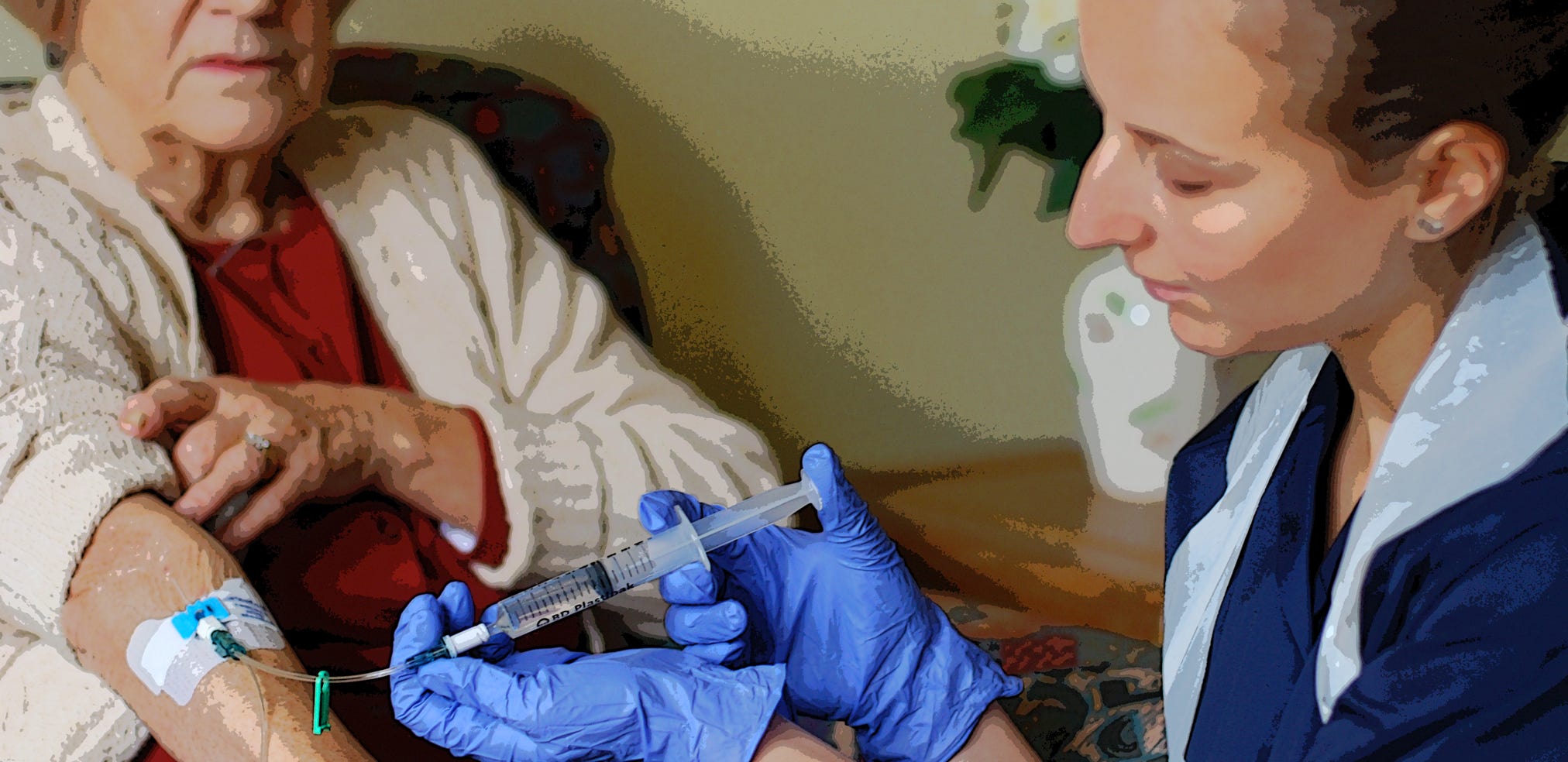
ANTT - Community/Home Care
Aseptic technique in the community setting, especially when in the patients own home, has been a controversial issue historically and even today is hotly debated!
The Q&A’s put to the Association over the last few years provide some guidance
Is asepsis possible in the home setting?
Yes. If it wasn’t, it wouldn’t be considered safe to discharge patients home requiring aseptic procedures. It would be also legally and morally wrong for health care organisations to discharge patients home knowing it would place patients at undue risk of infection. Healthcare organisations have a duty of care to ensure community healthcare workers are provided with suitable equipment and supplies to ensure asepsis. If you are a Community-HCW and don’t consider this to be the case then you have a duty to escalate your concern to your employer.
Is even Surgical-ANTT possible in a patients home?
Yes. For relatively small procedures it is possible to perform Surgical-ANTT. i.e. a Procedure in which you are managing all the procedure supplies, collectively, on and within a Critical Aseptic Field (sterile drape). Sterile gloves will be used and where required extra drapes may help.
Some homes are very dirty and the owner has an excitable dog!
For perspective, as much as some homes may appear dirty, it shouldn’t be forgotten that hospitals tend to have a much higher incidence of harmful atypical microorganisms such as clostridium difficult, MMSA and MRSA etc. It is up to the Community-HCW to mitigate the risks accordingly. For example, if hand washing facilities are compromised take your own soap and hand towels or use hand gel. The dog should be put in a different room :-). If simple work surfaces like tables or trays aren’t cleanable, then place a sterile drape or two over a surface and work from that, isolating the procedure equipment to this drape and using non touch technique.
How does ANTT in particular, support Community / Home based care?
Home based care clearly has unique challenges when considering safe aseptic technique and, prior to ANTT, the generic, ambiguous language and understanding of aseptic technique did not help. ANTT’s practice framework has enabled Community-HCW’s to assess any procedure in the home and identify the correct ANTT approach based on sound technical criteria, rather than subjective opinion or myth. In particular, Standard-ANTT, although based on strong and safe principles, is a particularly flexible approach, in which the HCW is trained to be less concerned with environmental issues that aren’t impacting the procedure, and focus more on protecting Key-Parts and the Key-Site individually - using Micro Critical Aseptic Fields and effective non-touch technique.
How are you doing?
We are always interested to hear from Community-HCW’s, so do get in touch if you have any questions or concerns or would like to share your experience.
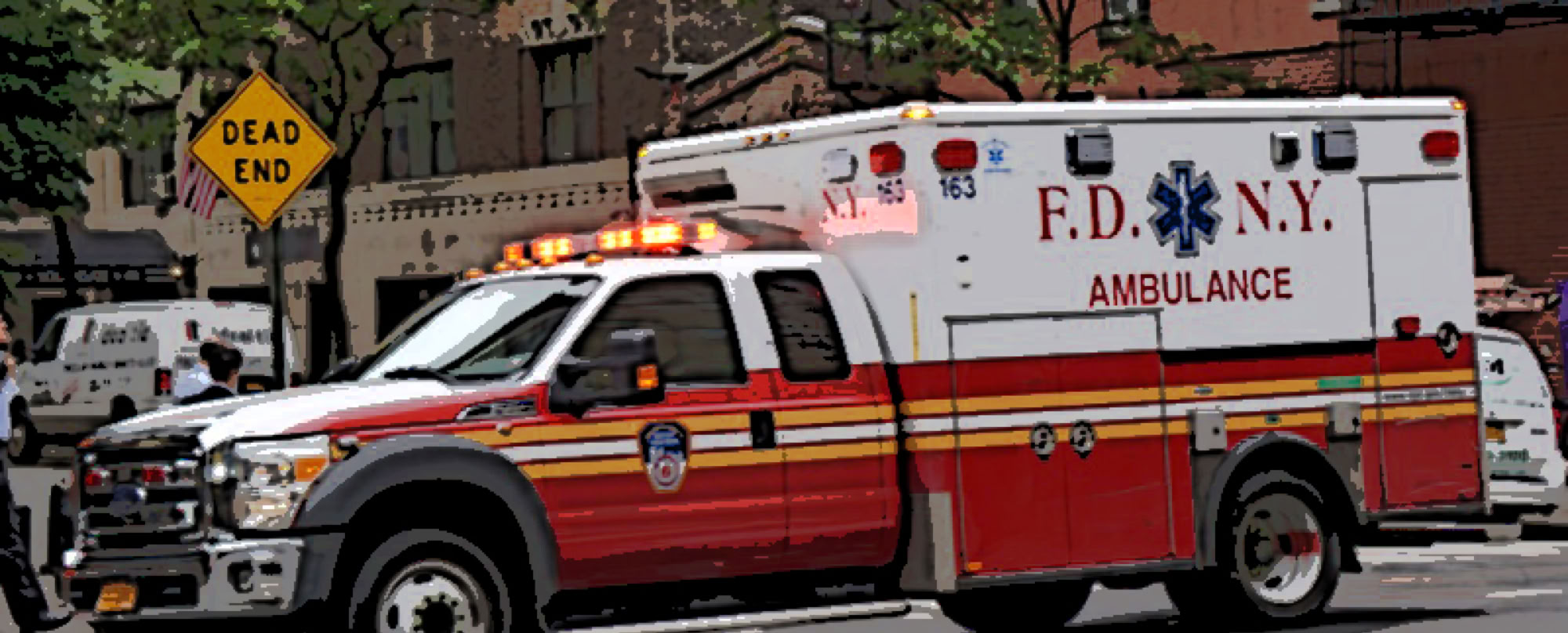
ANTT - Emergency Care
On request of, and in collaboration with, paramedics and emergency clinicians we developed ‘Emergency-ANTT’; This is a framework that recognises that on occasion, there are medical emergencies involving infection high risk to the patient that require IMMEDIATE medical intervention that can necessitate omitting some standard of the steps of ANTT. Such emergencies are more likely to be at the roadside or in military settings than in hospitals. Once the immediate threat to life is addressed, the practitioner will continue instituting more ANTT process in order to minimize ongoing risk of infection.
It should however be noted, that even in the most acute situations, a skilled practitioner trained in ANTT will usually still be able to apply the essential components of ANTT. For example, a paramedic faced with a car crash victim with a bleed from a limb, will protect the Key-Site by rapidly open sterile medical supplies and constrict the blood flow using non-touch technique. In a cardiac arrest situation, where a patients condition demands rapid preparation and administration of intravenous drugs, an ANTT competent practitioner, will quite easily ensure Key-Parts are protected throughout - knowing that the mindful use of non-touch technique combined with Micro Critical Aseptic Fields (sterile caps or the inside of recently opened sterile packaging) is effective - and quick. Essentially, this approach is Standard-ANTT being applied as each individual medical emergency demands. We are interested in listening to your thoughts on this approach so please do get in touch.
Standard-ANTT
Typically, a linear processes. (Normally performed
in a similar sequence)
.
Emergency-ANTT
Where an immediate threat to life exists, Emergency-ANTT may be performed in a more pragmatic sequence



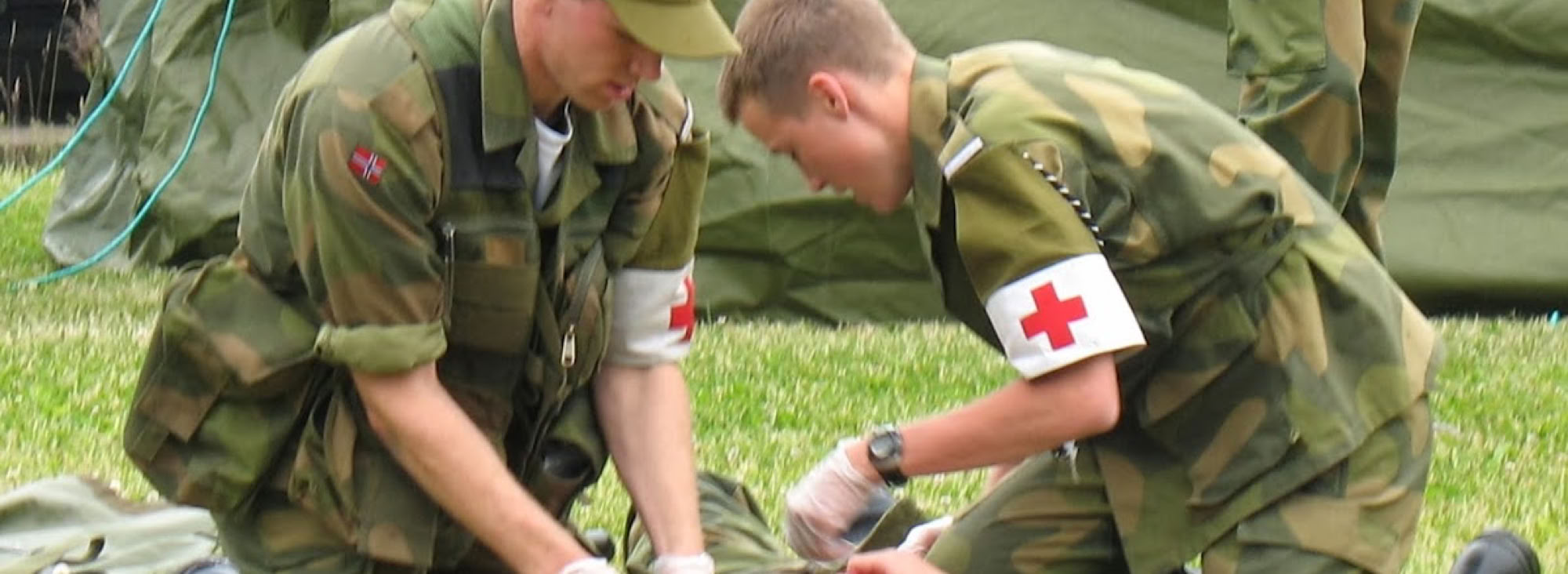
ANTT - Armed Forces Care
ANTT is used internationally to help educate and train armed forces personnel to be able to apply effective principles of aseptic technique - even when in the most challenging of situations. When a colleague has been injured the immediate priority is always to take actions to address any immediate threat to life. Using ANTT principles, personnel are taught how protecting Key-Parts using non touch technique and Micro Critical Aseptic Fields doesn’t take any longer - and helps minimise the risk of serious infection.
.

ANTT - Humanitarian Care
The ASAP supports Humanitarian Organisations with the aim to improve effectiveness of aseptic technique in even the most challenging of care environments and with minimal medical supplies. At the ANTT UK Conference 2020, Vicky Treacy-Wong, our Humanitarian advisor, from Médecins Sans Frontières (MSF), presented the findings from a collaborative project between MSF and the ASAP/ANTT involving field projects in South Sudan and Ethiopia with ASAP director Simon Clare.
Make no mistake, these settings were incredibly challenged and we learnt a huge amount working with such humanitarian experts as MSF. Much of the care in these settings is delivered by local health workers with minimal training or family members. The principles and process of Standard-ANTT in particular leant itself very well to such settings. For example, using the individual wrapping of sterile supplies as Micro Critical Aseptic Fields, proved useful as until then such wrappings had been discarded and their benefit not appreciated.
Any humanitarian organisations wishing to utilise ANTT are very welcome to get in touch.
